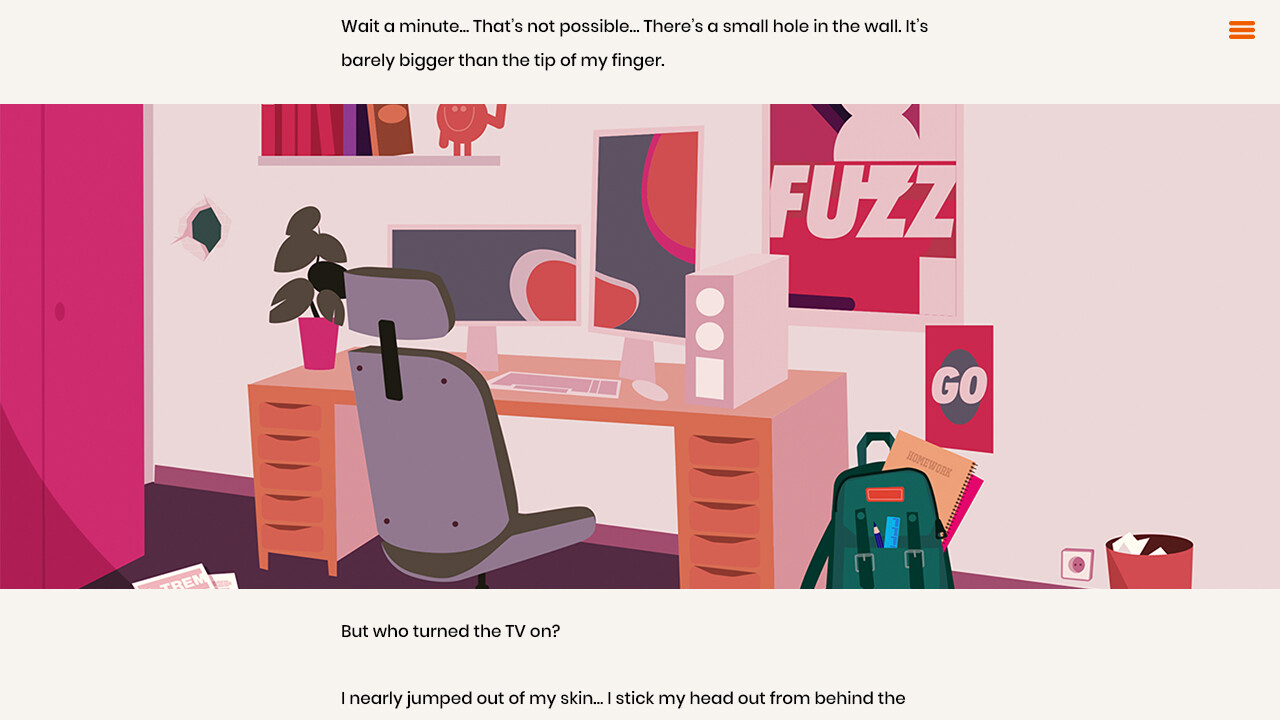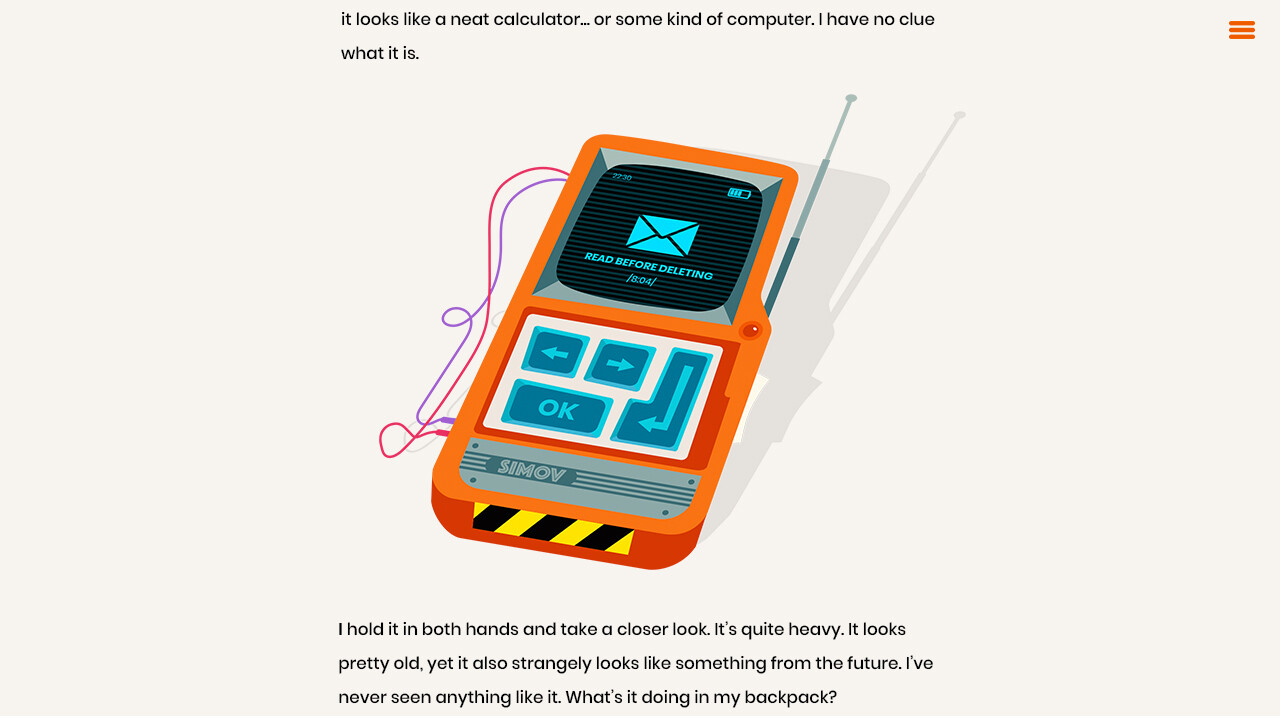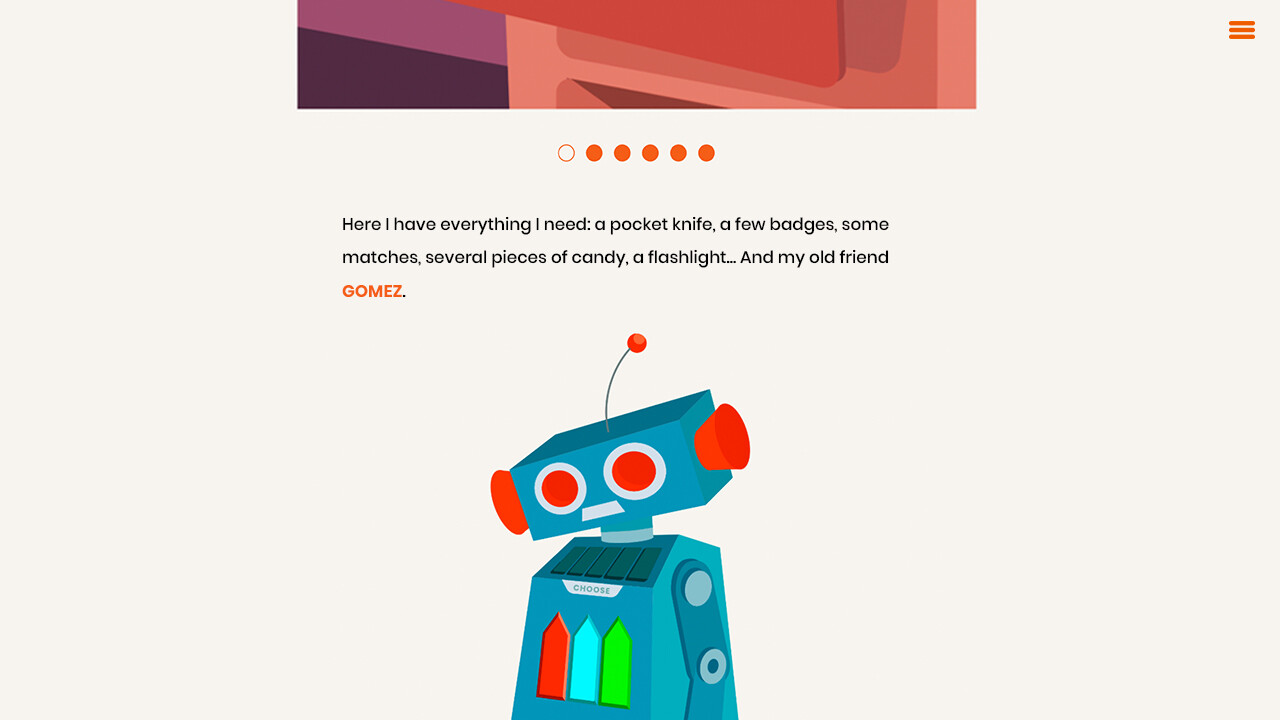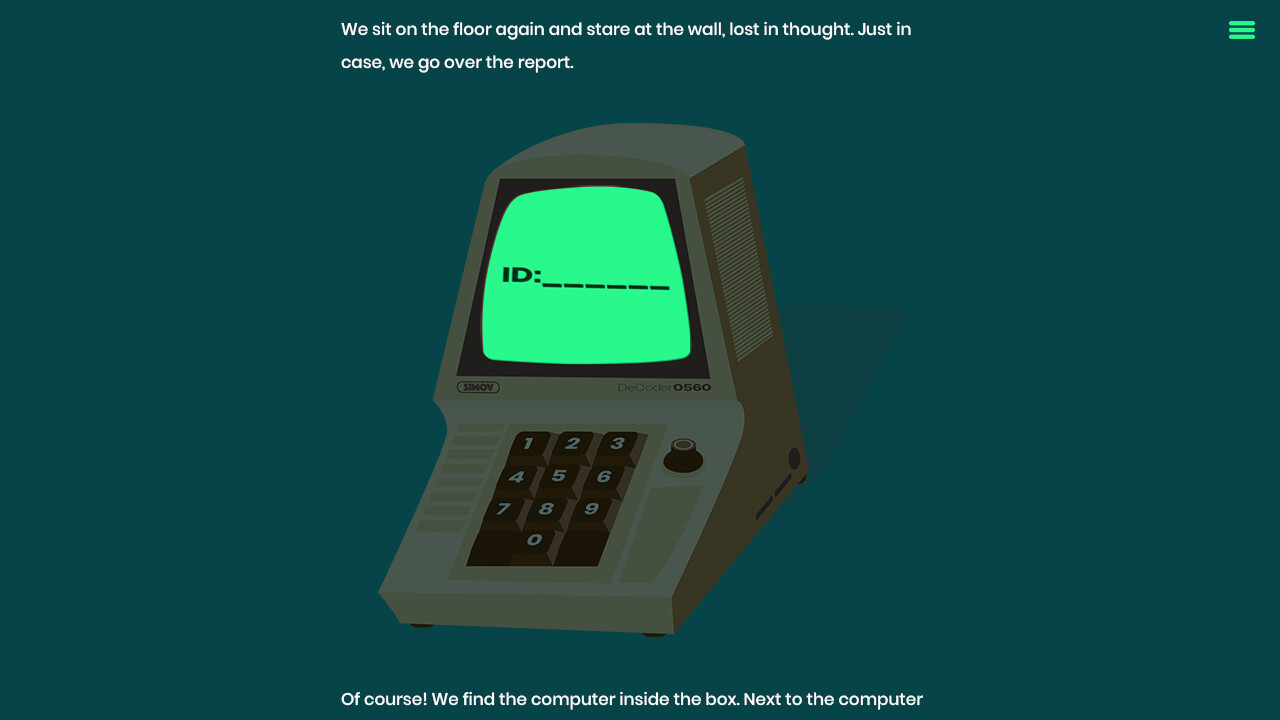Once upon a time, text adventures were all the rage. The likes of The Hobbit and Colossal Cave captured the imagination of an entire generation of gamers in the 80s. But times change. Interactive Fiction is a very different place in 2023. The traditional text adventure has been replaced almost entirely by visual novels, choose-your-own adventure FMV titles or hybrid creations blended with other genres. There’s still the occasional text adventure fitting that traditional mould, but they’re few and far between.
The latest title to enter this arena is ‘Delete After Reading’ from Patrones & Escondites. Utilising many of the staples from the 70s and 80s classics, the game tells an unusual and quirky story primarily through text. At the same time, the game blends its storytelling content with interactive puzzles to offer something original, if occasionally frustrating and confused.
Who You Gonna Call…
Delete After Reading’s text adventure component is portrayed through a first-person perspective. It puts you in the shoes of a young teen who’s coming home after the latest bad day in a string of bad days. When you get home, you find a weird device in your backpack.
After chilling in their room for a moment, odd things start to happen. You catch glimpses of a weird creature bolting around your room, just out of view. Then that device springs to life with a message on its screen titled “Delete After Reading”. In the message are instructions on how to reach a secret resistance group that are fighting back against the personification of Destiny itself.

After solving some puzzles (more on those in a second), you join up with the unlikely team that have been hiding out in your loft. What’s more, they’re all ghosts. Their mission? Recover the only copy of the fabled and long-awaited ‘The Curse of Penguin Island’ video game. With the help of Destiny, this game has been purchased by a wealthy villain who wants to lock the game away from the world. Accompanied by your new phantom friends, you set off to steal back the game and undermine Destiny.
Trippy Text, Tricky Puzzles
Without revealing too much more, Delete After Reading’s narrative is a curious one that’s enjoyable but often feels at odds with itself. Things just sort of happen, one after another, which makes the story feel a little like a series of coincidental events rather than a fluid tale. For example, there’s an odd moment when you finally uncover the address of the rich owner of the game you’re looking for. Instead of paying off the search with some kind of celebration, the game cuts to an advert for the device you found at the start of the game. Cue an abrupt fade to black and the start of the next chapter.
The tone of the writing also feels conflicted. Because you play as a child/teen, and the style of the writing is pitched at that level, Delete After Reading feels like it’s angling for a children’s or young adult literature level of narrative complexity. This is supported by a low level of threat throughout the game and no traditional “game over” screen. But at the other end of the scale, aspects like ‘The Curse of Penguin Island’, which is a definite nod to Monkey Island, feels like it wouldn’t land for this target demographic.

Where the general tone of Delete After Reading feels most confused is in the complexity of the puzzles in comparison to the story. Unless you have an eidetic memory, you’ll absolutely need a pen and some paper handy to complete this game. The game warns you of these even before you begin. There’s code breaking, memory puzzles, algebraic math equations, ciphers and more to solve throughout its chapters. Compared to the simplicity of the story, the puzzles feel vastly more advanced. I can see my kids enjoying the narrative, but being turned off entirely by the puzzles. Personally, I’m vice versa.
Save After Solving
The puzzles throughout Delete After Reading, along with the way that they’re structured, are its strongest element in my opinion. They’re presented as interactive images that appear between the paragraphs. Click on them are they often open up to provide more detail or to introduce more interactive elements. Hints are littered throughout the text on how to solve them, but often you’ll have to do some mental gymnastics in order to reach that point.
For example, in the first chapter, you’ll find a robot which is highlighted in the text as being of importance. Unfortunately, it’s malfunctioning and you need a screwdriver to be able to fix it. Further up the page are images of equipment and toys in your draws. There’s no screwdriver there, but there is a Swiss multi-tool knife… see where this is headed? Select the right attachment and return to the image of the robot and the text will have changed slightly to allow progress.

Every chapter of the game has its own gimmick for these puzzles. The first chapter is kind of your tutorial that eases you into the mechanics. In the second chapter, you get to use a special light which illuminates special clues on many of the interactive aspects. A later chapter feels like a choose-your-own-adventure novel that has you piecing puzzles together from a number of different locations on their own digital page.
Some Puzzling Choices
It’s a shame then that some of the later puzzles start to become frustrating. For example, the aforementioned choose-you-own-adventure chapter of the game is interesting in concept but is poorly executed. The chapter involves a lot of backtracking as you search through a mansion, but the text doesn’t change to reflect that. Move from the Games Room into the Living Room, and the text will say “We left the Dining Room and entered the Living Room” rather than reflect your actual progress.
This chapter also breaks with a convention that the game had already established. Throughout the previous chapters, Delete After Reading uses coloured text cleverly to indicate words that can be clicked on and interacted with. In this chapter, some of those words are simply bold and black. I probably should have twigged, but after becoming accustomed to seeing the coloured text as a prompt to dig deeper, it meant I was left briefly frustrated when I couldn’t figure out a puzzle.
A later chapter of Delete After Reading certainly needed better checkpoints too. Rather than puzzles, this chapter’s initial stages moves into reaction and timed events. After getting through some rapid paced memory puzzles, you come to a spot that has three dials rapidly changing on screen. The aim is to click on the image when all dials show the correct image. Get this wrong and you have to start the whole chapter again. It feels so out of place compared to the rest of the game which has a contemplative pace. I messed this up a shameful number of times and I eventually just closed the game in a huff.
I later wished I hadn’t because Delete After Reading lacks an auto-save function. I’d lost all my progress. I was starting from scratch.

Something To Text Home About?
There’s no doubt that Delete After Reading is a novel concept. It innovates on the traditional text adventures from the past by splicing in select elements from interactive fiction’s present. The art style is appealing, the music suits the tone of the game, there are a handful of great puzzles and there are parts of each chapter that are well written.
It’s a shame that that’s not a consistent aspect throughout the facets of Delete After Reading. There are a few typos here and there which are totally forgivable, but there are more deep-seated issues which are difficult to overcome. The tone of the game feels conflicted, some of the later puzzles are totally out of place, there’s a lack of consistency to the writing and mechanics and in the end, the game doesn’t feel like it capitalises on the uniqueness of its concept. There’s some enjoyment to be found here, but you might be as equally left wanting to Delete After Playing.
A novel take on interactive fiction, Delete After Reading can’t quite capitalise on its uniqueness. Tonally conflicted, lacking puzzle consistency and missing some technical aspects that are expected in 2023 (like an auto-save function), this is a missed opportunity to truly evolve the genre.

Delete After Reading is available now on PC (review platform) and iOS.
Developer: PATRONES & ESCONDITES / TLR Games
Publisher: PATRONES & ESCONDITES
Disclaimer: In order to complete this review, we were provided with a promotional code from the publisher. For our full review policy, please go here.
If you enjoyed this article or any more of our content, please consider our Patreon.
Make sure to follow Finger Guns on our social channels. Twitter, Facebook, Twitch, Spotify or Apple Podcasts – to keep up to date on our news, reviews and features.
